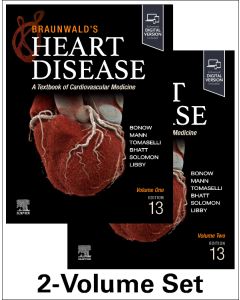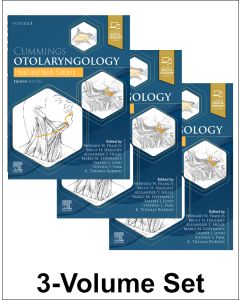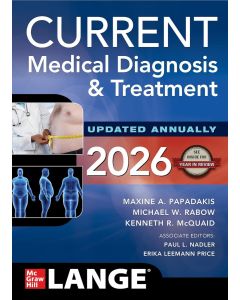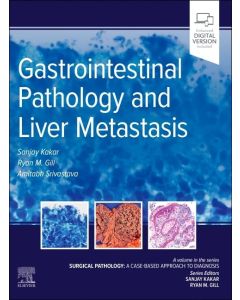Schmidek And Sweet: Operative Neurosurgical Techniques 2-Volume Set, 7Th Edition
Incluye Gastos de Importación
-
Especialidad
- Neurocirugía
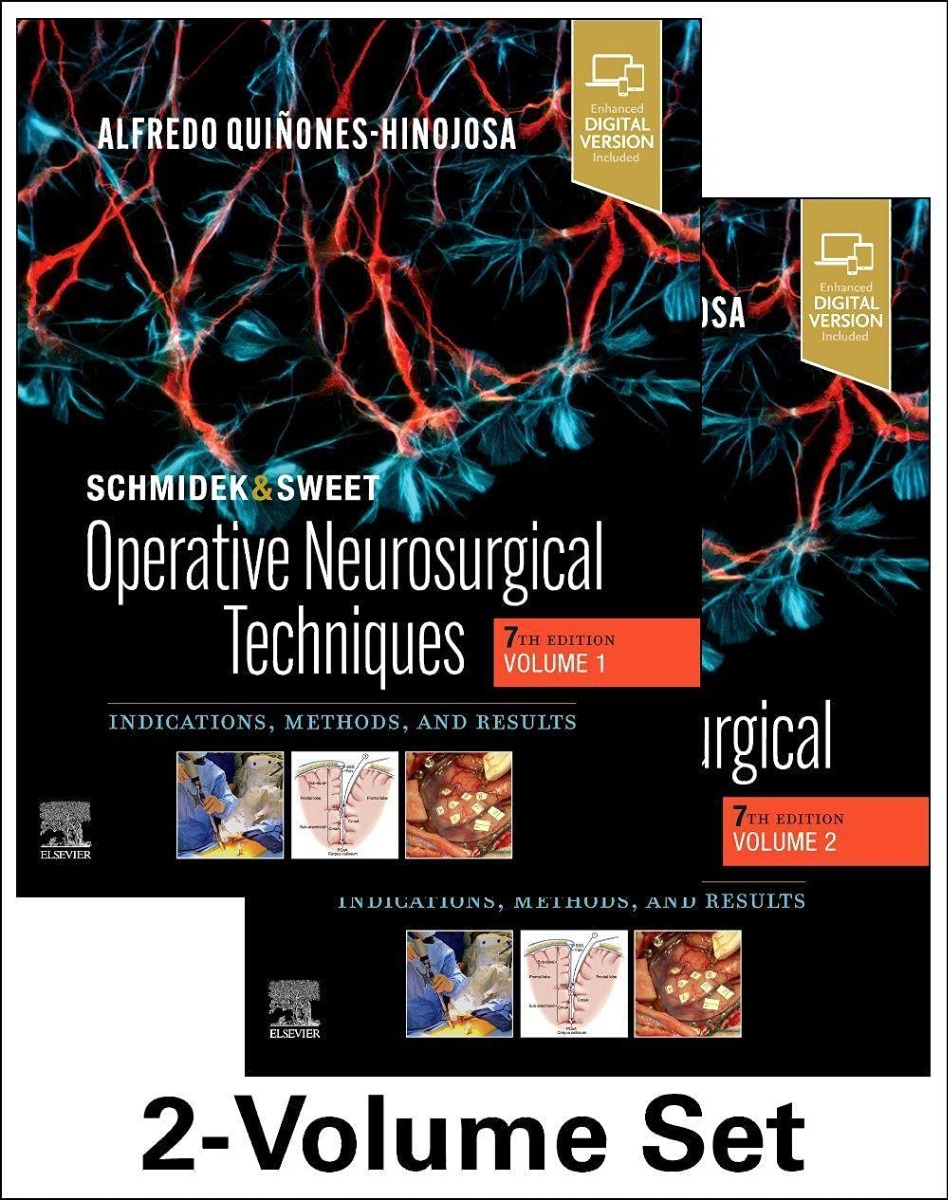
Volume One
- Ensuring Patient Safety in Surgery-First Do No Harm
- Surgical Navigation with Intraoperative Imaging: Special Operating Room Concepts
Section One
Surgical Management of Brain and Skull Base Tumors
Intra-Axial Brain Tumors
- Functional Tractography, Diffusion Tensor Imaging, Intraoperative Integration of Modalities, and Neuronavigation
- Intraoperative Neurophysiology: A Tool to Prevent and/or Document Intraoperative Injury to the Nervous System
- Gamma Knife Surgery for Cerebral Vascular Malformations and Tumors
- Cortical and Subcortical Brain Mapping
- Chemotherapy for Brain Tumors
- Current Surgical Management of High-Grade Gliomas
- Surgical Management of Low-Grade Gliomas
- Management of Recurrent Gliomas
- Tumors in Eloquent Areas of Brain
- Management of Primary Central Nervous System Lymphomas
- Surgical Management of Brain Stem Tumors in Adults
- Cerebellar Tumors in Adults
- Surgical Management of Cerebral Metastases
Pituitary and Parapituitary Tumors
- Multimodal Assessment of Pituitary and Parasellar Lesions
- Medical Management of Hormone-Secreting Pituitary Tumors
- Growth Hormone-Secreting Tumors
- Prolactinomas
- Cushing?s Disease
- Endocrinologically Silent Pituitary Tumors
- Endoscopic Endonasal Pituitary and Skull Base Surgery
- Transcranial Surgery for Pituitary Macroadenomas
- Craniopharyngiomas
- Endoscopic Endonasal Approach for Craniopharyngiomas
- Arachnoid, Suprasellar, and Rathke?s Cleft Cysts
Intraventricular Tumors
- Surgical Approaches to Lateral and Third Ventricular Tumors
- Transcallosal Surgery of Lesions Affecting the Third Ventricle: Basic Principles
- Endoscopic Approach to Intraventricular Brain Tumors
- Management of Pineal Region Tumors
- Management of Tumors of the Fourth Ventricle
Extra-Axial and Posterior Tumors
- Surgical Management of Parasagittal and Convexity Meningiomas
- Surgical Approach to Falcine Meningiomas
- Surgical Management of Midline Anterior Skull Base Meningiomas
- Supraorbital Approach Variants for Intracranial Tumors
- Surgical Management of Sphenoid Wing Meningiomas
- Spheno-Orbital Meningioma
- Tumors Involving the Cavernous Sinus
- Surgery for Trigeminal Neurinomas
- Surgical Management of Petroclival Meningiomas
- Surgical Management of Lesions of the Clivus
- Surgical Management of Posterior Fossa Meningiomas
- Surgical Management of Tumors of the Foramen Magnum
- Surgical Management of Tumors of the Jugular Foramen
Cerebellopontine Angle Tumors
- Suboccipital Retrosigmoid Surgical Approach for Vestibular Schwannoma (Acoustic Neuroma)
- Translabyrinthine Approach to Vestibular Schwannomas
- Transtemporal Approaches to Posterior Cranial Fossa
- Surgical Management of Neurofibromatosis Types 1 and 2
- Hearing Prosthetics: Surgical Techniques
Lesions at the Skull Base
- Multimodal Treatment of Orbital Tumors
- Surgical Approaches to the Orbit603
- Anterior Midline Approaches to the Skull Base
- Orbitozygomatic Infratemporal Approach to Parasellar Meningiomas
Section Two
Operative Techniques in Pediatric Neurosurgery
- Methods for Cerebrospinal Fluid Diversion in Pediatric Hydrocephalus: From Shunt to Scope
- Posterior Fossa Tumors in the Pediatric Population: Multidisciplinary Management
- Supratentorial Tumors in the Pediatric Population: Multidisciplinary Management
- Mapping, Disconnection, and Resective Surgery in Pediatric Epilepsy
- Surgical Decision-Making and Treatment Options for Chiari Malformations in Children
- Fetal Surgery for Open Neural Tube Defects
- Surgical Management of Spinal Dysraphism
- Revascularization Techniques in Pediatric Cerebrovascular Disorders
- Management of Pediatric Severe Traumatic Brain Injury
- Contemporary Dorsal Rhizotomy Surgery for the Treatment of Spasticity in Childhood
- Instrumentation and Stabilization of the Pediatric Spine: Technical Nuances and Age-Specific Considerations
- Methods of Cranial Vault Reconstruction for Craniosynostosis
Section Three
Vascular Diseases
Open Treatment
- Surgical Management of the Extracranial Carotid Artery Disease
- Management of Dissections of the Carotid and Vertebral Arteries
- Management of Unruptured Intracranial Aneurysms
- Surgical Management of Intracerebral Hemorrhage
- Surgical Management of Cerebellar Stroke-Hemorrhage and Infarction
- Surgical Treatment of Moyamoya Disease in Adults
- Surgical Treatment of Paraclinoid Aneurysms
- Surgical Management of Posterior Communicating, Anterior Choroidal, Carotid Bifurcation Aneurysms
- Surgical Management of Anterior Communicating and Anterior Cerebral Artery Aneurysms
- Surgical Management of Aneurysms of the Middle Cerebral Artery
- Surgical Management of Terminal Basilar and Posterior Cerebral Artery Aneurysms
- Surgical Management of Midbasilar and Lower Basilar Aneurysms
- Surgical Management of Aneurysms of the Vertebral and Posterior Inferior Cerebellar Artery CompleX
- Far Lateral Approach and Transcondylar and Supracondylar Extensions for Aneurysms of the Vertebrobasilar Junction
- Surgical Management of Cranial Dural Arteriovenous Fistulas
- Surgical Management of Cavernous Malformations of the Nervous System
- Surgical Management of Infratentorial Arteriovenous Malformations
- Surgical Management of Cerebral Arteriovenous Malformations
Endovascular Treatment
- Endovascular Management of Intracranial Aneurysms1019
- Endovascular Treatment of Stroke
- Endovascular Treatment of Cerebral Arteriovenous Malformations
- Endovascular Treatment of Intracranial Occlusive Disease
- Endovascular Treatment of Extracranial Occlusive Disease
- Embolization of Tumors: Brain, Head, Neck, and Spine
- Endovascular Management of Dural Arteriovenous Fistulas
- Endovascular Management of Spinal Vascular Malformations
- Endovascular Treatment of Head and Neck Bleeding
- Imaging Evaluation and Endovascular Treatment of Vasospasm
Section Four
Hydrocephalus
- Surgical Management of Hydrocephalus in the Adult
- Adult Pseudotumor Cerebri Syndrome
- Endoscopic Third Ventriculostomy
- Management of Shunt Infections
Section Five
Stereotactic Radiosurgery
- Interstitial and LINAC-Radiosurgery for Brain Metastases
- Stereotactic Radiosurgery for Trigeminal Neuralgia
- CyberKnife Radiosurgery for Spinal Neoplasms
- Stereotactic Radiosurgery for Pituitary Adenomas
- Radiation Therapy and Radiosurgery in the Management of Craniopharyngiomas
- Vestibular Schwannomas: The Role of Stereotactic Radiosurgery
- Stereotactic Radiosurgery Meningiomas
- Role of Gamma Knife Radiosurgery in the Management of Arteriovenous Malformations
- Radiation Therapy of Epilepsy
- Gamma Surgery for Functional Disorders
Volume Two
Section Six: Functional Neurosurgery
Surgical Management of Medically Intractable Epilepsy
- Presurgical Evaluation for Epilepsy Including Intracranial Electrodes
- Temporal Lobe Operations in Intractable Epilepsy
- Surgical Management of Extratemporal Lobe Epilepsy
- Multilobar Resection and Hemispherectomy in Epilepsy Surgery
- Corpus Callosotomy: Indications and Techniques
- Treatment of Intractable Epilepsy by Electrical Stimulation of the Vagus Nerve
Surgical Management of Psychiatric and Movement Disorders
- Deep Brain Stimulation in Movement Disorders: Parkinson?s Disease, Essential Tremor, and Dystonia
- Cervical Dystonia and Spasmodic Torticollis: Indications and Techniques
- Novel Targets in Deep Brain Stimulation for Movement Disorders
- Molecular Therapies for Movement Disorders
- Cingulotomy for Intractable Psychiatric Illness
- Deep Brain Stimulation for Intractable Psychiatric Illness
- Brain-Computer Interfacing Prospects and Technical Aspects
- Thoracoscopic Sympathectomy for Hyperhidrosis
- Surgery for Intractable Spasticity
Surgical Management of Intractable Pain
- Retrogasserian Glycerol Rhizolysis in Trigeminal Neuralgia
- Percutaneous Stereotactic Rhizotomy in the Treatment of Intractable Facial Pain
- Neurovascular Decompression in Cranial Nerves V, VII, IX, and X
- Deep Brain Stimulation for Pain
- Mesencephalic Tractotomy and Anterolateral Cordotomy for Intractable Pain
- Spinal Cord Stimulation for Chronic Pain
- Spinal Cord Stimulation and Intraspinal Infusions for Pain
- Dorsal Root Entry Zone Lesions
- Motor Cortex Stimulation for Intractable Facial Pain
Section Seven
Trauma
- Perioperative Management of Severe Traumatic Brain Injury in Adults
- Surgical Management of Severe Closed Head Injury in Adults
- Management of Penetrating and Blast Injuries of the Nervous System
- Decompressive Craniectomy for Traumatic Brain Injury
- Management of Skull Base Trauma
- Surgical Management of Chronic Subdural Hematoma in Adults
- Management of Cerebrospinal Fluid Leaks
- Principles of Scalp Surgery and Surgical Management of Major Defects of Scalp
- Surgical Management of Major Skull Defects and Potential Complications
- Management of Traumatic Intracranial Aneurysms
- Management of Penetrating Brain Injury
Section Eight
Surgical Management of Nervous System Infections
- Management of Suppurative Intracranial Infections
- Management of Infections After Craniotomy
- Spinal Infections: Vertebral Osteomyelitis and Spinal Epidural Abscess
- Neurosurgical Management of HIV-Related Focal Brain Lesions
- Management of Neurocysticercosis
- Management of Tuberculous Infections of the Nervous System
- Fungal Infections of the Central Nervous System
- Management of Intracranial Aneurysms Caused by Infection
Section Nine: Neurosurgical Management of Spinal Disorders
Degenerative Spine Disorder
Cervical Spine
- Treatment Evolution in Management of Cervical Disc Disease
- Anterior Cervical Foraminotomy (Jho Procedure): Microscopic or Endoscopic
- Minimally Invasive Posterior Cervical Foraminotomy and Microdiscectomy
- Disc Replacement Technologies in the Cervical and Lumbar Spine
- Anterior Approaches for Multilevel Cervical Spondylosis
- Management of Cervical Spondylotic Myelopathy
- Cervical Laminoplasty: Indications and Techniques
- Circumferential Cervical Spinal Fusion
Thoracic Spine
- Surgical Techniques in the Management of Thoracic Disc Herniations
- Video-Assisted Thoracoscopic Discectomy: Indications and Techniques
Lumbar Spine
- Lumbar Microdiscectomy: Indications and Techniques
- Minimally Invasive Lumbar Microdiscectomy: Indications and Techniques
- Management of Far Lateral Lumbar Disc Herniations
- Lumbar Spinal Arthroplasty: Clinical Experiences of Motion Preservation
- Management of Degenerative Lumbar Stenosis and Spondylolisthesis
- Posterior Lumbar Fusion by Open Technique: Indications and Techniques
- Percutaneous Placement of Lumbar Pedicle Screws: Indications and Techniques
- Dynamic Stabilization of the Lumbar Spine: Indications and Techniques
- Posterior Lumbar Interbody Fusion
- Transforaminal Lumbar Interbody Fusion: Indications and Techniques
- Anterior Lumbar Interbody Fusion: Indications and Techniques
- Lateral Lumbar Interbody Fusion: Indications and Techniques
- Vertebroplasty and Kyphoplasty: Indications and Techniques
Spine Trauma
- Management of Injuries of the Cervical Spine and Spinal Cord
- Transoral Approaches to the Cervical Spine
- Atlantoaxial Instability and Stabilization
- Stabilization of the Subaxial Cervical Spine (C3-C7)
- Thoracolumbar Anterolateral and Posterior Stabilization
- Management of Sacral Fractures
- Management of Penetrating Injuries to the Spine
Congenital and Developmental Spinal Abnormalities
- Craniovertebral Abnormalities and Their Neurosurgical Management
- Management of Chiari Malformations and Syringomyelia
- Management of Occult Spinal Dysraphism in Adults
- Neurologic Problems of the Spine in Achondroplasia
Spinal Deformity
- Management of Degenerative Scoliosis
Spine Tumors
- Surgical Management of Intramedullary Spinal Cord Tumors in Adults
- Intradural Extramedullary Tumors
- Management of Spinal Cord Tumors and Arteriovenous Malformations
- Management of Cauda Equina Tumors
- Management of Primary Malignant Tumors of the Osseous Spine
- Surgical Approaches to the Cervicothoracic Junction
- Surgery for Metastatic Spine Disease
- Surgical Resection of Sacral Tumors
Specific Complications of Spine Surgery
- Surgical Management of Cerebrospinal Fluid Leakage after Spinal Surgery
Section Ten: Surgical Management of the Peripheral Nervous System
- Peripheral Nerve Injury
- Imaging for Peripheral Nerve Disorders
- Management of Adult Brachial Plexus Injuries
- Nerve Transfers: Indications and Techniques
- Management of Median Nerve Compression
- Management of Ulnar Nerve Compression
- Management of Entrapment Neuropathies
- Management of Nerve Sheath Tumors Involving the Spine
- Peripheral Nerve Tumors of the Extremities
- Management of Cranial Nerve Injuries
- Management of Thoracic Outlet Syndrome
- Nerve-Grafting Procedures for Birth-Related Peripheral Nerve Injuries




